Introduction
For gardening enthusiasts and basil aficionados, the sight of black spots on basil leaves can be disheartening. Basil, a staple in many gardens and kitchens, is not just valued for its culinary uses but also for its aesthetic appeal. However, like all plants, basil can face its share of challenges. One such challenge is the appearance of black spots on its leaves. Understanding the root cause of these spots and how to address them is crucial for maintaining a healthy basil plant.
Basil, a popular culinary herb, can sometimes develop black spots on its leaves due to various reasons. These spots can arise from fungal or bacterial infections, environmental stressors like frost or excessive sunlight, or even pest infestations. Early identification and appropriate treatment are crucial to manage and prevent these black spots. Regular monitoring, proper watering practices, and ensuring optimal growing conditions can help maintain the health and vitality of your basil plants.
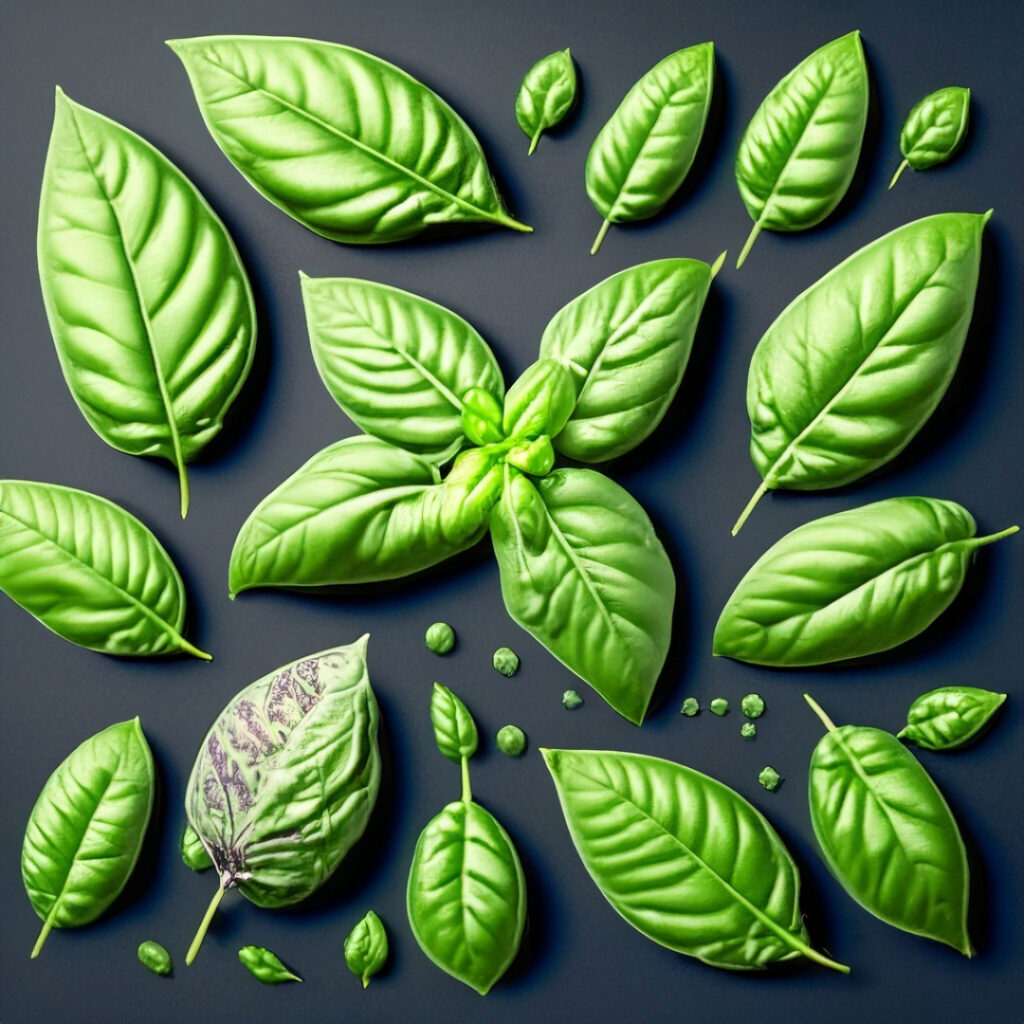
Causes of Black Spots on Basil Leaves
Black spots on basil leaves can be a sign of various underlying issues. To effectively address the problem, it’s essential to pinpoint the exact cause. Here are some of the most common culprits:
Frost Damage
Frost can be a silent enemy of basil. When the temperature drops suddenly, the water inside the basil leaves can freeze, leading to cell damage. This damage often manifests as black spots, especially on the uppermost stems and leaves.
Fungal and Bacterial Infections
Various fungi and bacteria can attack basil, leading to discolored patches and spots. Fungal infections can appear anywhere on the leaf, while bacterial infections often result in moist patches accompanied by brown spots.
Environmental Factors
Excessive sun exposure can sometimes cause basil leaves to develop black spots. Just like our skin can get sunburned, basil leaves can get sunscalded, especially if they’re suddenly exposed to harsh sunlight after being in the shade.
Pest Infestations
Pests such as aphids and spider mites can cause black spots on basil leaves. These pests suck the sap out of the leaves, leading to discoloration and, in severe cases, leaf drop.
Nutrient Deficiencies
While less common, nutrient deficiencies can also lead to black spots on basil leaves. A lack of essential nutrients can cause the leaves to become more susceptible to diseases and pests.
Handy Hint: Regularly inspecting your basil plant can help in early detection of any issues, allowing for timely intervention.
Symptoms and Identification
Identifying the root cause of black spots on basil leaves requires a keen eye and an understanding of the various symptoms associated with each potential issue. Early identification is paramount, as it allows for timely intervention, ensuring the health and longevity of your basil plant.
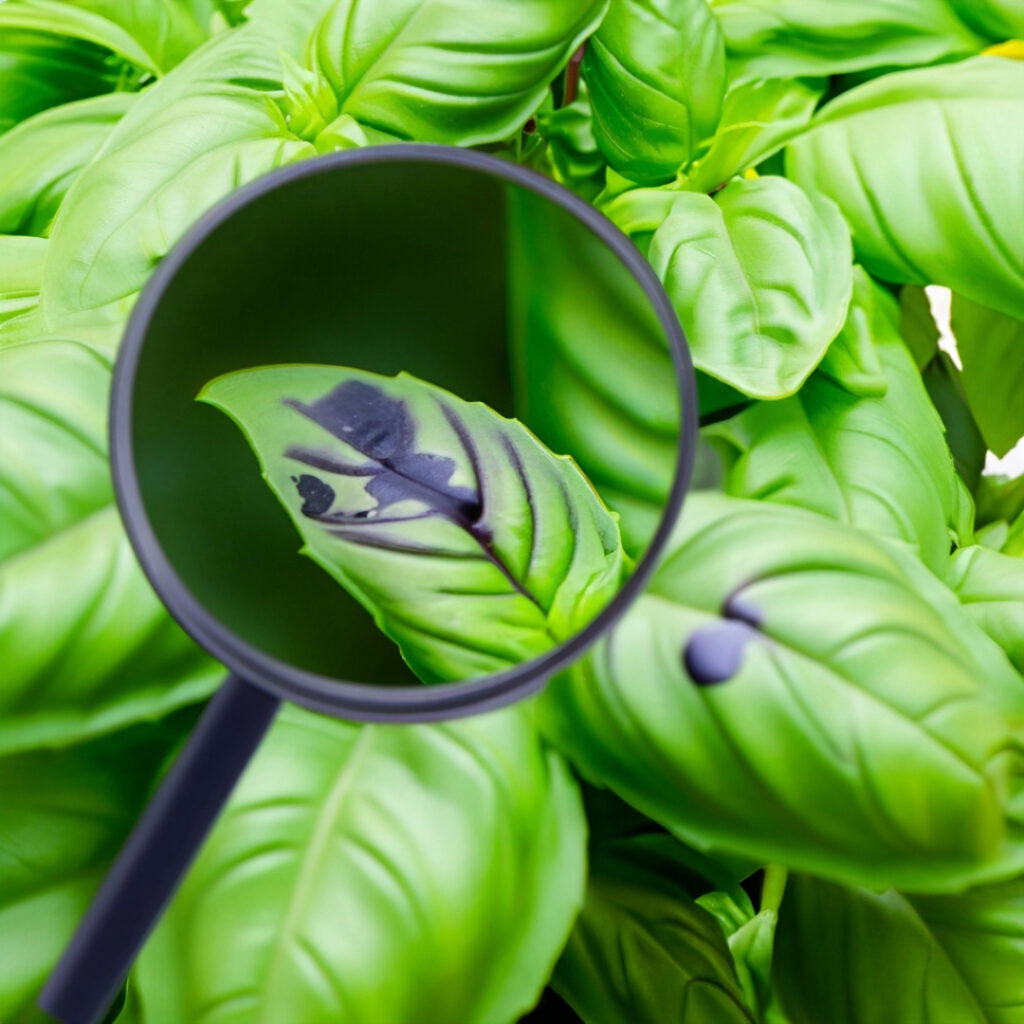
Distinguishing Between Different Causes
Frost Damage: The black spots caused by frost damage are typically found on the uppermost stems and leaves. These spots may have a water-soaked appearance initially, turning black as the tissue dies.
Fungal and Bacterial Infections: Fungal infections often manifest as irregular black or brown spots scattered across the leaf. In contrast, bacterial infections can lead to moist patches with a few brown spots, often surrounded by a yellow halo.
Environmental Factors: Sunscald or sunburn spots are usually dry, brown to black, and may appear on the edges or tips of leaves. These spots can be confused with fungal infections but lack the yellow halo typical of bacterial issues.
Pest Infestations: Black spots due to pests are often accompanied by other signs, such as webbing or the presence of the pests themselves. The spots may also be surrounded by a yellowish discoloration.
Nutrient Deficiencies: While black spots due to nutrient deficiencies are rare, the plant may show other symptoms like yellowing or curling of leaves, making it easier to distinguish.
Importance of Early Identification
Early identification of the cause of black spots is crucial. The sooner you can pinpoint the issue, the quicker you can take corrective measures, preventing further damage and ensuring your basil thrives.
Answering the Question
So, what do dark spots on basil mean? In essence, they are a cry for help from your plant. Whether it’s due to environmental stress, pests, or diseases, dark spots are an indication that your basil is facing challenges that need to be addressed promptly.
Pro Tip: Always quarantine new plants for a few days before introducing them to your garden. This can help prevent the spread of pests and diseases to your existing plants.
Treatment and Prevention
Black spots on basil leaves can be concerning, but with the right approach, they can be treated and even prevented in the future. Let’s delve into the solutions and preventive measures to ensure your basil remains vibrant and healthy.
Addressing the Black Spots
So, how do you fix black spots on basil? The treatment largely depends on the root cause of the issue:
- Frost Damage: If frost is the culprit, consider relocating your basil to a warmer spot or using protective covers during cold nights.
- Fungal and Bacterial Infections: Remove and dispose of infected leaves to prevent the spread. Ensure proper spacing between plants for adequate air circulation. Fungicides or bactericides can be applied, but always follow label instructions.
- Environmental Factors: If sunscald is the issue, consider relocating your basil to a spot with filtered sunlight or using shade cloth during peak sun hours.
- Pest Infestations: Natural predators, like ladybugs, can help control pest populations. Insecticidal soaps or neem oil can also be effective.
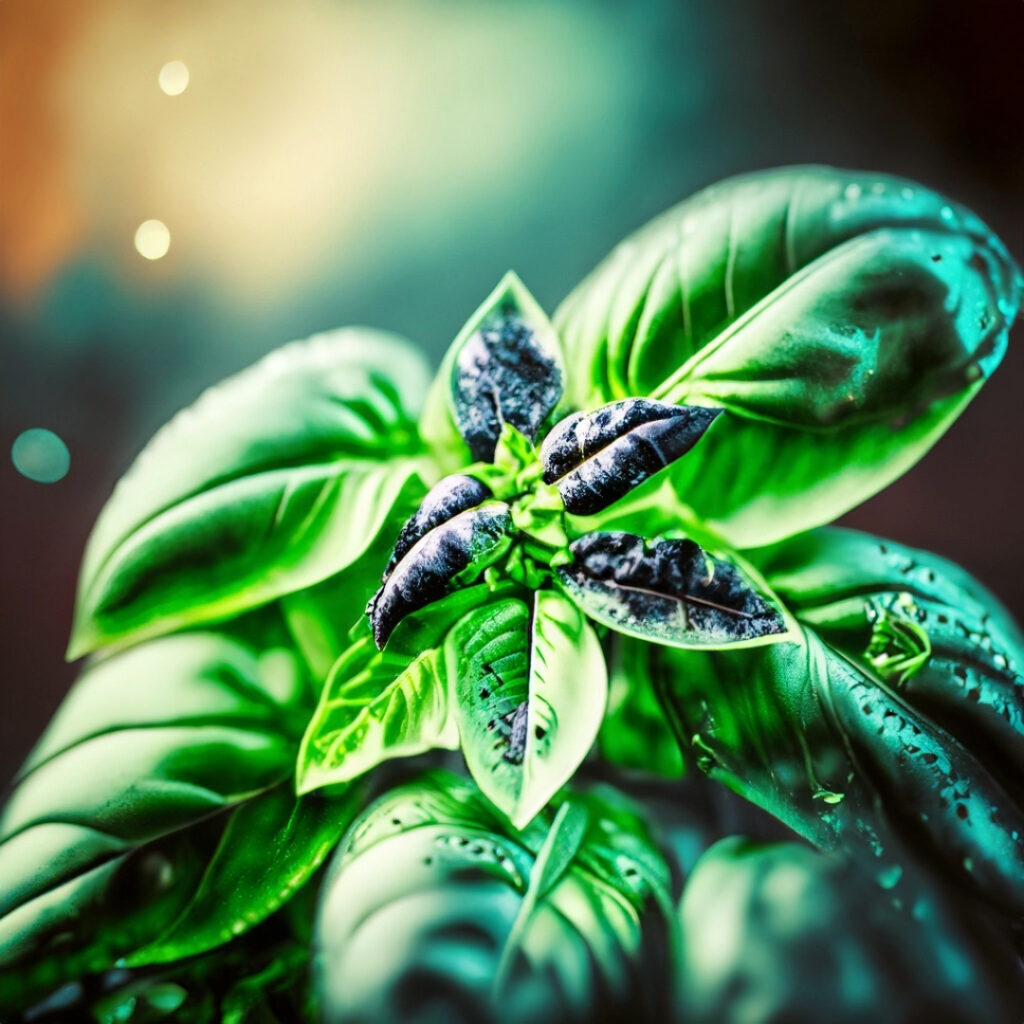
Bacterial Leaf Spot Treatment
Bacterial leaf spot is a common ailment in basil. To treat it:
- Prune away the affected leaves and dispose of them properly, not in a compost pile.
- Apply a copper-based fungicide, ensuring thorough coverage of the plant. Repeat applications may be necessary.
- Avoid overhead watering, as wet leaves can exacerbate the issue.
Preventing Black Spots in the Future
Prevention is always better than cure. Here are some tips to keep black spots at bay:
- Ensure proper spacing between plants for good air circulation.
- Water at the base of the plant, avoiding wetting the leaves.
- Regularly inspect your basil for early signs of issues and address them promptly.
- Use disease-free seeds or plants when starting a new basil patch.
- Rotate crops if planting in the ground to prevent soil-borne diseases.
Handy Hint: While ashes are nutrient-rich, moderation is key. Over-application can lead to nutrient imbalances, so it’s essential to strike the right balance.
Frequently Asked Questions
Is it safe to eat basil leaves with black spots?
While black spots on basil leaves can be unappealing, they are not necessarily harmful. However, if the black spots are due to bacterial or fungal infections, it’s best to avoid consuming those leaves. Always wash basil thoroughly before consumption, and when in doubt, discard affected leaves to be on the safe side.
Why is my basil getting black spots on the leaves?
Black spots on basil leaves can arise from various factors, including frost damage, fungal and bacterial infections, pest infestations, and environmental stressors like excessive sun exposure. Identifying the root cause is essential for effective treatment and prevention.
What does overwatered basil look like?
Overwatered basil typically exhibits yellowing leaves, especially at the base of the plant. The leaves might appear limp or droopy, and the soil will feel consistently wet. Over time, overwatering can lead to root rot, a condition where the roots turn brown or black and become mushy.
How often should you water basil?
Basil prefers moist but well-draining soil. It’s generally best to water basil when the top 1-2 inches of soil feels dry to the touch. Depending on the climate and soil type, this might mean watering every 2-3 days during hot, dry periods or once a week during cooler, humid conditions.
Should I cut off brown basil leaves?
Yes, it’s a good practice to prune off brown, yellow, or damaged basil leaves. This not only helps the plant look better but also promotes better air circulation and reduces the chances of fungal and bacterial infections.
Can you eat diseased basil?
It’s not advisable to eat diseased basil. While some diseases might not be harmful to humans, consuming affected leaves can lead to an unpleasant taste or texture. Moreover, some pathogens that affect plants can also affect humans. Always err on the side of caution and discard any leaves that look unhealthy.
How do you know if basil has root rot?
Root rot in basil is characterized by brown or black, mushy roots. The plant might appear wilted or droopy, even with adequate watering. The base of the stem may also turn dark and become soft. If you suspect root rot, it’s essential to address the issue promptly, which might involve repotting the plant in fresh, well-draining soil and ensuring proper watering practices.
Caring for Basil: Best Practices
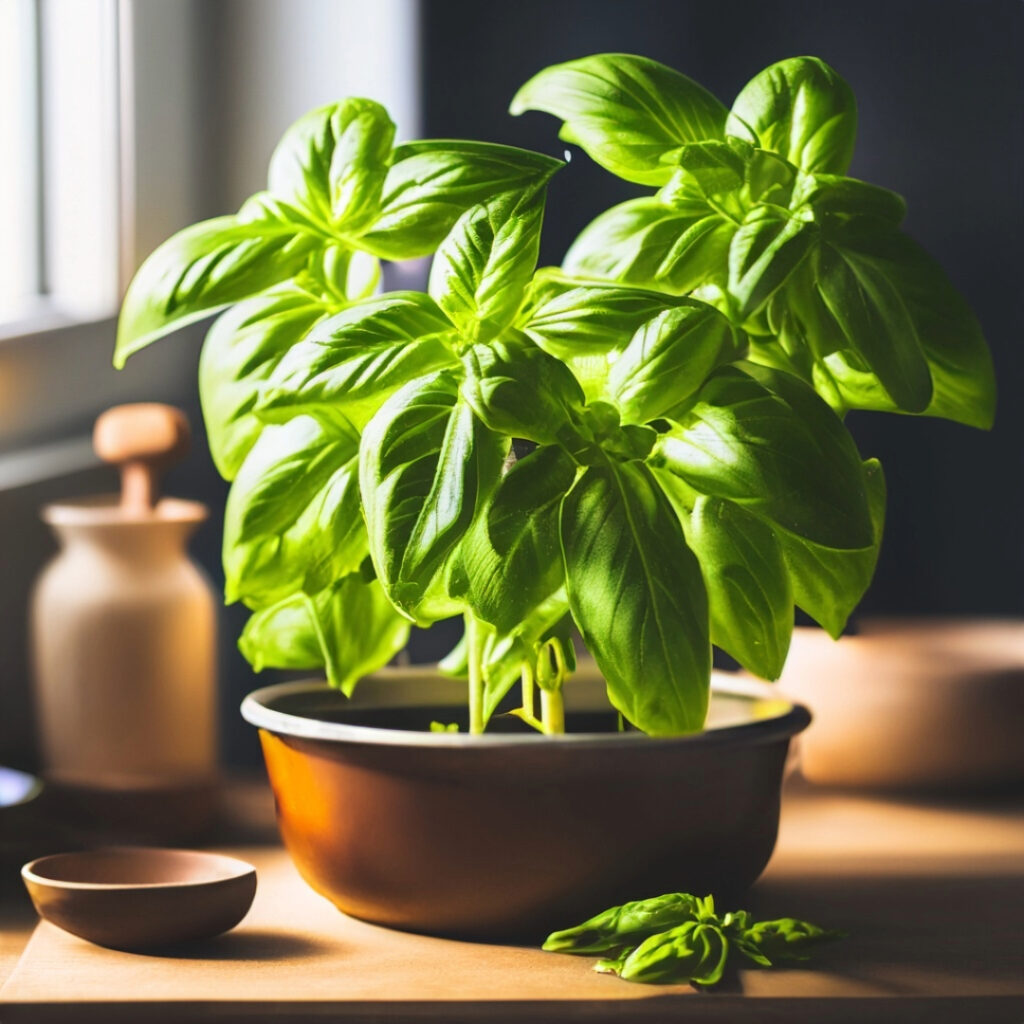
Watering Basil: Striking the Right Balance
Watering is crucial for basil’s growth, but it’s essential to find the right balance. Basil thrives in moist, well-draining soil. Typically, watering when the top 1-2 inches of soil feels dry to the touch is ideal. In hotter climates or during dry spells, basil might require more frequent watering, possibly every 2-3 days. However, in cooler or humid conditions, once a week might suffice. Overwatering can lead to various issues, including root rot. Signs of overwatering include yellowing leaves, especially at the plant’s base, and a consistently wet soil. If the roots appear brown, mushy, or have a foul odor, it’s a clear indication of root rot, often caused by excessive moisture.
The Sunlight Equation: How Much is Too Much?
Basil loves sunlight, but like all good things, moderation is key. Ideally, basil should receive 6-8 hours of direct sunlight daily. However, in regions with intense midday sun, it’s beneficial to provide some afternoon shade to prevent the leaves from scorching. Signs that your basil might be getting too much sun include leaves turning pale green or yellow, brown spots, or the plant appearing wilted even with adequate watering. If you notice these signs, consider relocating your basil plant or providing some shade during the hottest parts of the day.
Perking Up Your Basil Plant
If your basil appears a bit droopy or lackluster, don’t fret! There are ways to perk it up. Firstly, ensure it’s receiving the right amount of water. A good soak might be all it needs. If the soil is too wet, allow it to dry out a bit before watering again. Secondly, prune any yellow or damaged leaves to encourage new growth. A little organic fertilizer can also give your basil a boost. Lastly, ensure your basil isn’t crowded. If it’s in a pot, consider repotting it into a larger container or thinning out any neighboring plants if it’s in a garden bed. With a little TLC, your basil will be vibrant and thriving in no time!
Additional Tips and Tricks
Basil, with its aromatic leaves and versatile culinary applications, deserves the best care. Here are some additional pointers to ensure your basil remains in top condition:
Misting Basil
Misting basil can be beneficial, especially in dry climates or during winter months when indoor air can become quite dry. This process provides the leaves with moisture, mimicking a more natural and humid environment. This not only helps in keeping the basil hydrated but also aids in preventing pest infestations, as many pests prefer dry conditions.
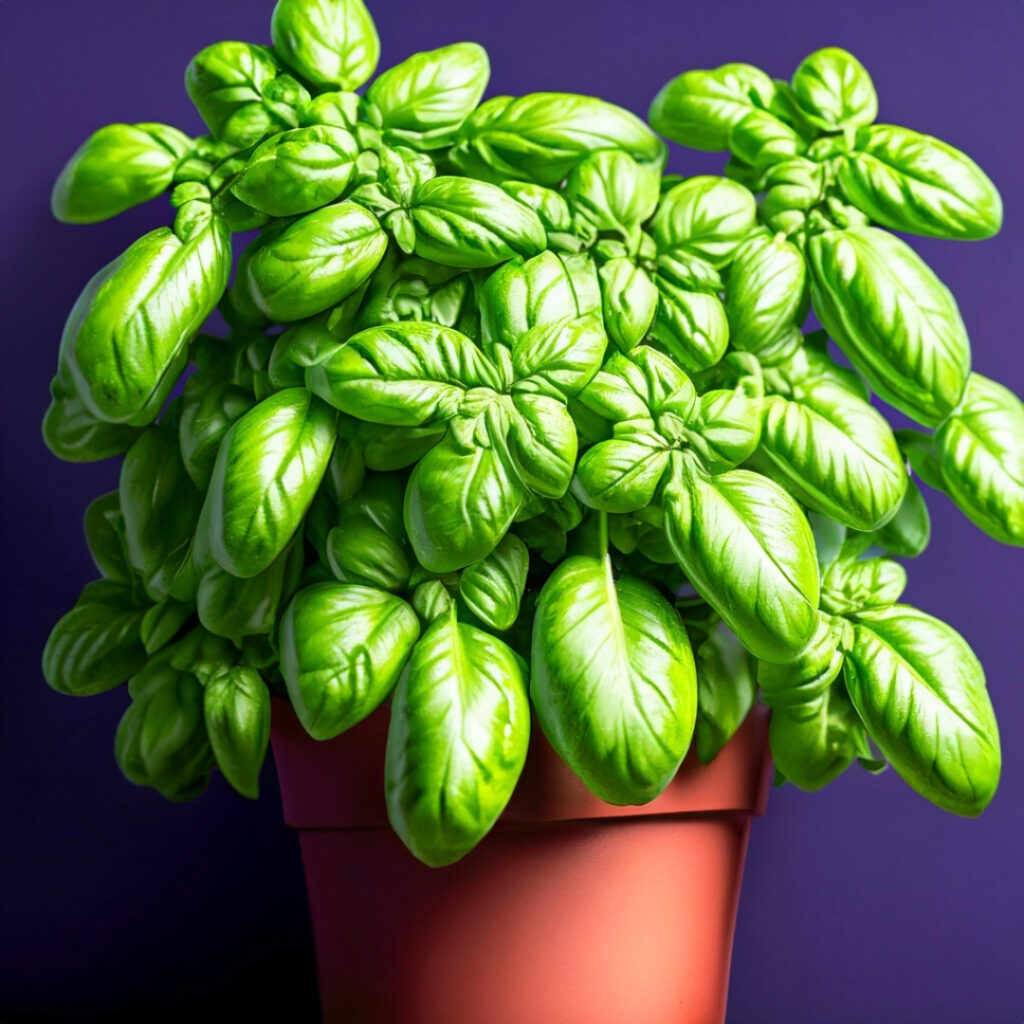
Preventing Overwatering
Overwatering is a common mistake many gardeners make. To ensure you don’t overwater your basil, always check the soil before watering. If the top inch of the soil feels dry, it’s time to water. If it still feels moist, wait a day or two. Using a well-draining potting mix and ensuring your pot has drainage holes can also help prevent waterlogging. Remember, it’s always better to underwater than overwater, as basil roots are susceptible to rot in stagnant water.
Storing Basil to Prevent Blackening
If you’ve harvested more basil than you can use immediately, proper storage is crucial to prevent blackening, especially in the fridge. Instead of refrigerating basil directly, consider storing it like a bouquet of flowers. Trim the stems and place them in a glass of water, covering the leaves with a plastic bag. This creates a mini greenhouse effect, keeping your basil fresh. If you must refrigerate, ensure the leaves are dry to prevent moisture-induced blackening.
